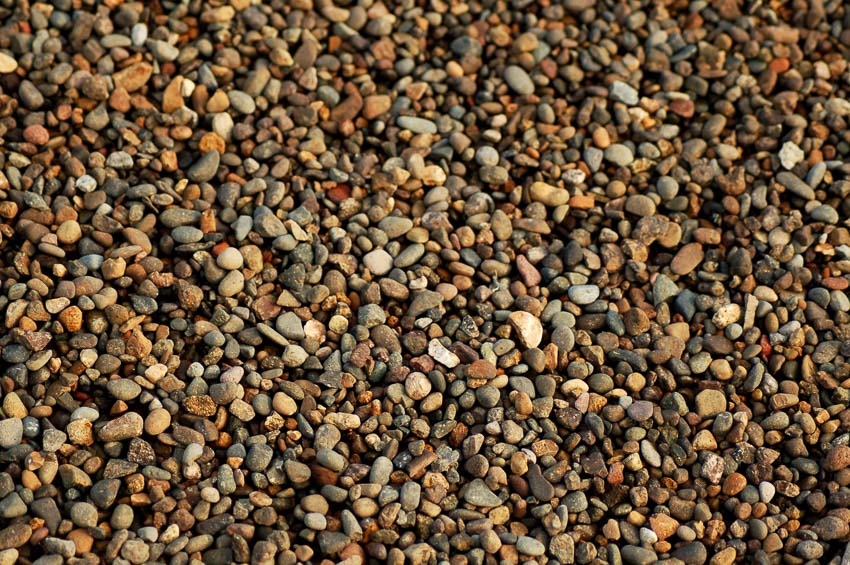Pea gravel is a versatile landscaping material. It has many uses, including above-ground and underground applications, that enhance the appearance of your outdoor spaces and provide better drainage. Learn more about the cost of pea gravel, its uses, and its advantages with this comprehensive pricing guide.
What is Pea Gravel, and What is it Good For?
It can get a little confusing when you’re looking for the right type of gravel for your landscaping projects. There are many different types of gravel, and pea gravel is just one of them.
So what is pea gravel? People use the term in different ways. While any type of pea gravel is a good choice for yard projects, you could end up with something other than what you were looking for.
Here’s an in-depth look at the definition of pea gravel, including what it’s composed of, its texture and appearance, and the most common uses of pea gravel.
Definition and Composition
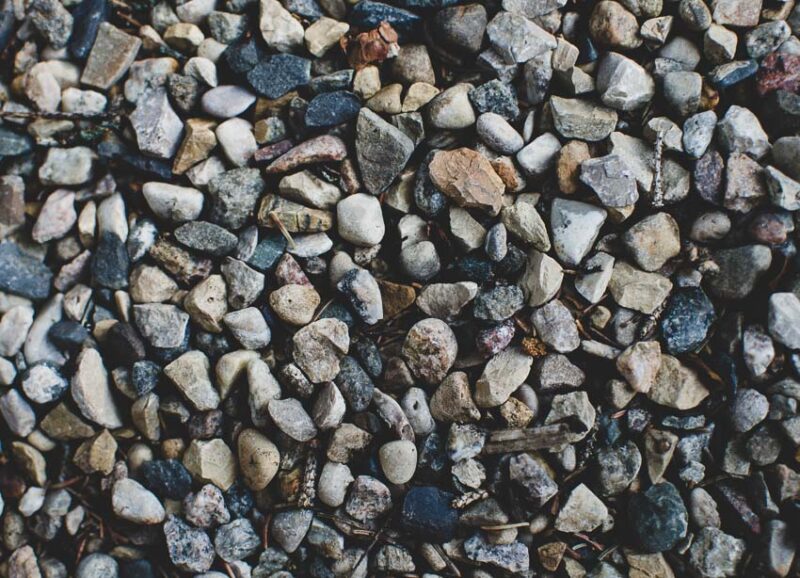
The term “pea gravel” refers to small pea-sized river rock pebbles, naturally occurring, in sizes from ⅛” to ⅜” in diameter. You can purchase them as aggregate for landscaping or construction projects.
River rocks come in many sizes, with pea gravel being the smallest. Any type of rock that water has worn smooth is a river rock, including igneous, sedimentary, and metamorphic types of rocks.
People sometimes confuse pea gravel with crushed river rock, screened to less than ⅜” and sold without fines. You can use crushed rock for many of the same types of projects as pea gravel. However, pebbles with rounded edges have a more elegant appearance, making them better choices for certain projects.
Texture and Appearance
Pea gravel pebbles are smooth and rounded, worn down by eons of tumbling in ancient rivers and streams. Like all river rock, pea gravel comes in various colors.
The most common color of pea gravel is a mix of earthy grays, but you can find pea gravel in browns, whites, creams, greens, and reddish-brown colors. It’s also commonly available in dark grays and blacks.
Versatile Uses of Pea Gravel
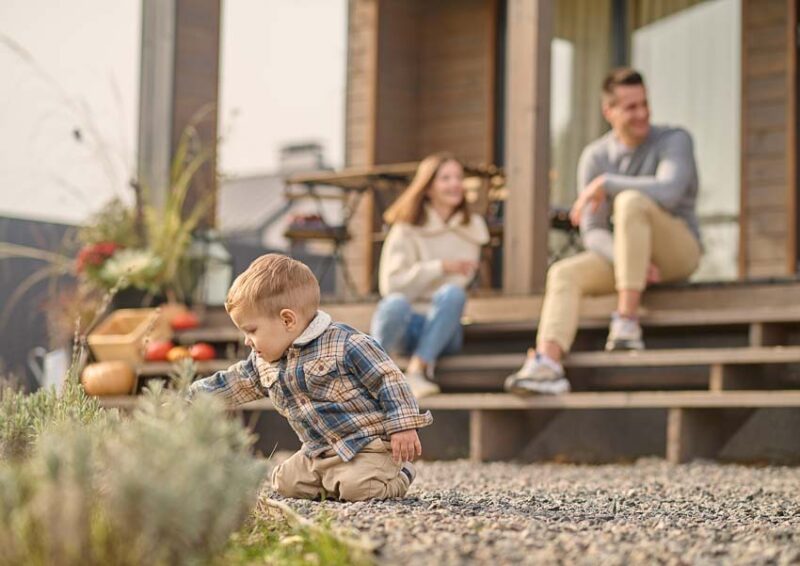
Pea gravel is a versatile building material. People typically use it in above-ground projects, like pathways, walkways, and decorative landscaping. You can also use it in underground projects as a drainage solution.
Pathways and Walkways
One of the most common uses for pea gravel is pathways and walkways. Having a border or edging to keep it in place is always a good idea.
Pea gravel doesn’t contain fines, so it moves around a lot. Fines are the small particles of dirt in ¾ minus construction gravel that make it bind together to form a hard surface.
Pea gravel sometimes comes in handy as a top coating on gravel driveways to enhance curb appeal. They come in a wide variety of colors to complement the exterior of buildings, but like pathways, you need to use edging to keep the loose pea gravel in place.
You can also use pea gravel in other high-traffic areas, especially where soil compaction is a problem. Pea gravel makes a nice shade ground cover in the parts of your yard where plants and grass won’t grow, such as dog runs, children’s backyard play areas, and shady areas.
Decorative Landscaping
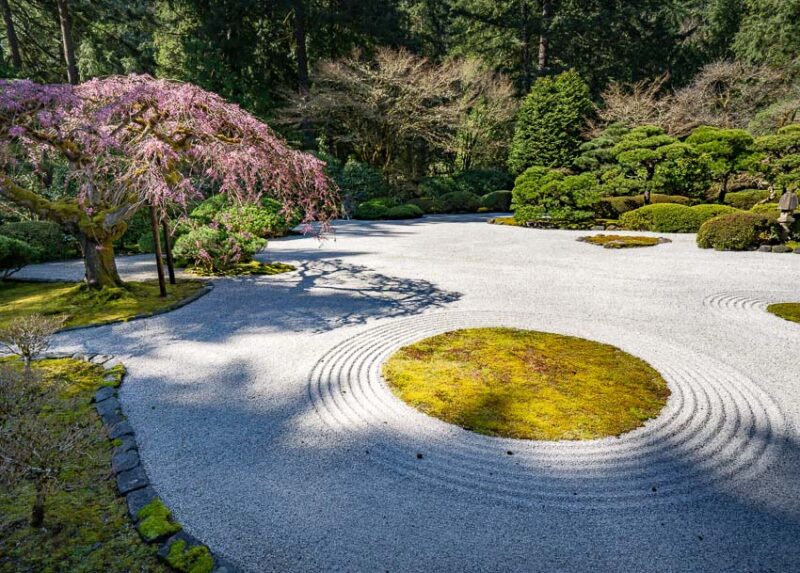
One of the primary uses of pea gravel is decorative landscaping. Here are a few of the ways that you can use pea gravel to improve the appearance of your outdoor spaces:
- As mulch on flower beds,
- Around the bases of trees and shrubs to combat erosion,
- Underneath different types of fencing, where you want to get rid of weeds,
- In patios, combined with materials like concrete pavers as a mixed media solution, and
- As an alternative to grass as a ground cover in xeriscaping.
Drainage Solutions
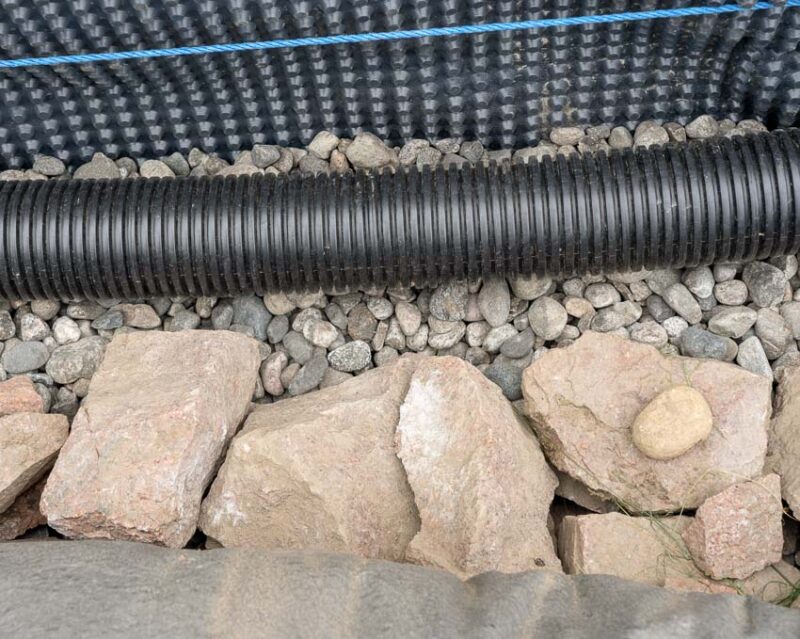
Another common use for pea gravel is as an aggregate in drainage projects, which makes it worth the cost. It’s typically placed underground around pipes and French drains in erosion control applications.
When installing water spigots, you should generally place pea gravel around the base of the pipe before you fill in the dirt. This allows the frost-free hydrant to drain at the bottom of the pipe more easily.
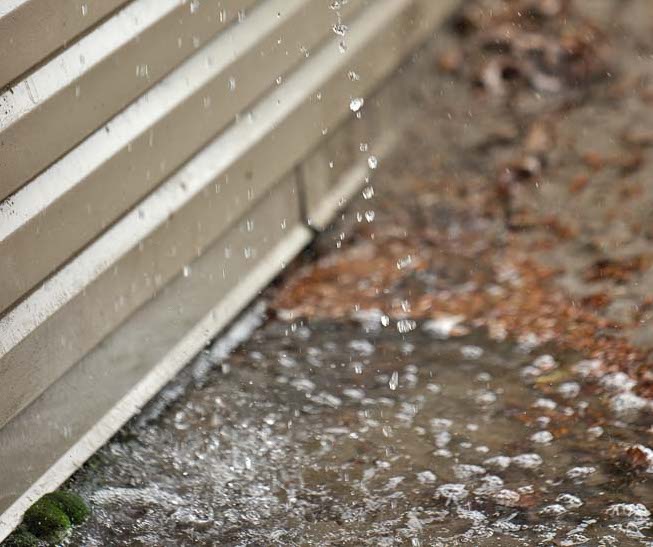
Another drainage solution where you can apply pea gravel is around the foundation of a house. This gets rid of standing water around the foundation of a building, which can cause hydrostatic pressure that eventually damages the integrity of the footings.
Why Pea Gravel is a Better Choice
Pea gravel is versatile, and it’s often the best landscaping material to use for your projects. Take a look at why pea gravel is a better choice than other materials, like wood mulch, crushed rock, and construction gravel.
Natural Drainage and Erosion Control
Pea gravel formed millions of years ago in old river beds, worn down over time by water flowing over and through rock particles. As a result, pea gravel obtains its shape naturally as the perfect drainage material.
Because water can flow through without displacing it, pea gravel is an effective erosion control solution. Also, when raindrops impact pea gravel, it doesn’t cause much movement. Therefore, it’s the perfect erosion control medium for landscaping around the base of trees and shrubs.
Aesthetically Pleasing and Low-Maintenance
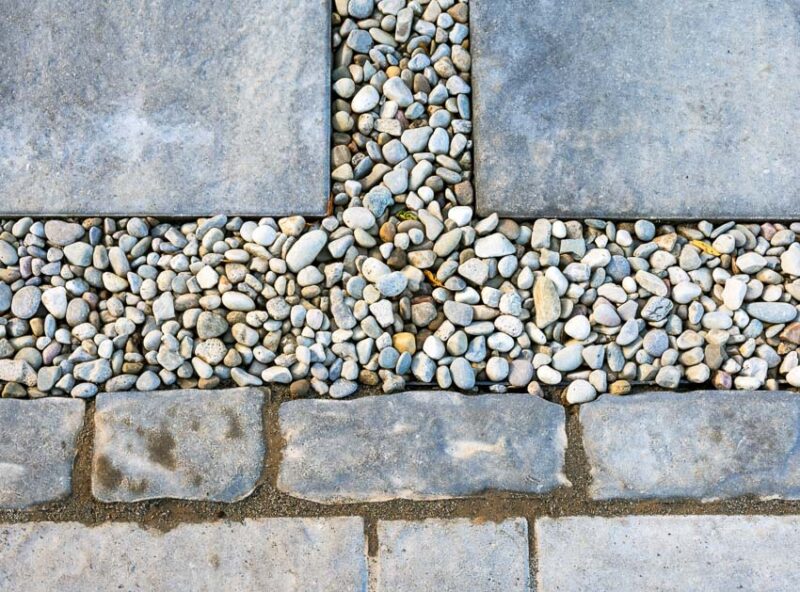
The variety of textures is aesthetically pleasing when you use pea gravel around patio pavers, flagstones, and river rocks. Pea gravel is also incredibly easy to care for, especially if you use landscape fabric as a weed barrier underneath it.
Cost-Effective and Environmentally Friendly
Pea gravel costs less than other types of river rock and does the same job in many ways. It’s also less costly than wood mulch, which you must replenish yearly.
If you compare pea gravel to products like rubber mulch, it is more environmentally friendly because it won’t leach chemicals.
Pea Gravel Cost Breakdown
How much does pea gravel cost? The average cost of pea gravel is about $20 to $50 per ton, depending on various factors. Here is a detailed look at the cost breakdown of pea gravel.
Factors Influencing Cost
The amount of pea gravel you purchase is the biggest determiner of the overall cost of your project, but other factors influence the cost. Use this information to avoid surprise charges and help you budget your project.
Bulk or Bagged
Pea gravel is available in bulk or bags. Most bagged pea gravel comes in a 0.5 cubic foot bag, weighing about 50 pounds, and costs about $5 per bag at major home improvement stores.
Purchasing bags of pea gravel is fine for a small project, like a concrete birdbath or other small garden features. But if you’re doing extensive landscape work, you should purchase it by cubic yard or ton.
Delivery Costs
When you’re comparing pea gravel prices, make sure that delivery costs are included. Otherwise, you could be in for a big surprise when you get the bill.
Delivery costs increase the further away the destination is from the supply. In most cases, it’s best to find the nearest bulk landscaping supply company or rock quarry because hauling heavy loads gets expensive. Many companies charge $5 to $10 per mile outside a certain radius.
If you have a truck, you can haul it yourself, but gravel is extremely heavy, and it’s probably more trouble than it’s worth. It usually costs about $10 to $30 more per ton if you have it delivered.
Colors
Some colors of pea gravel cost more than others, mostly because some types of colored pea gravel have to travel a long way to reach a distribution center.
The most common type of pea gravel comes in various shades of gray. If you want to purchase a specific color, it will cost about twice as much as the standard gray color, whether you purchase it by bag or in bulk.
River-washed or Screened
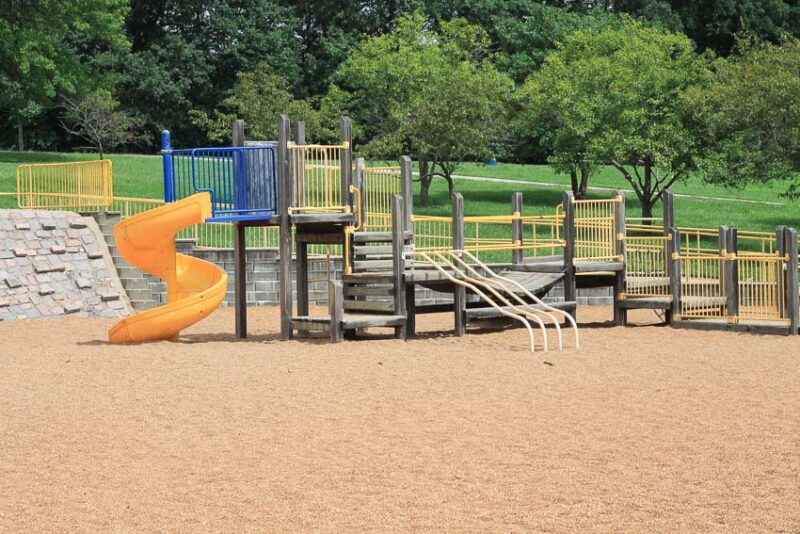
River-washed pea gravel is the smoothest type, and it’s an excellent choice when texture and aesthetics matter, like in children’s playgrounds and flower beds.
Crushed and screened pea gravel has rougher edges, giving it a slightly different appearance. Crushed rock is a less expensive alternative for underground applications. It’s also an excellent choice for driveways, parking spots, and building pads for sheds.
Labor
Labor costs vary in regions across the United States. The cost of labor impacts goods and services; in places with a higher cost of living, like Los Angeles, everything costs a little more.
The overall cost of your project will be impacted by labor costs, from delivery of the product to hiring someone to install it for you. If you plan on hiring a gardener or hiring a landscaper to spread or distribute the pea gravel, it will cost more in regions with higher labor costs.
Price per Cubic Yard or Ton
Rock and gravel are sold by the cubic yard or ton, and it’s important not to confuse the two when comparing prices.
On average, a ton of pea gravel equals about 0.714 cubic yards. Use the following conversion formulas to get prices that you can compare:
- Multiply the price of pea gravel per ton by 0.714 to get the price per cubic yard.
- Divide the price of pea gravel per cubic yard by 0.714 to get the price per ton.
Extra Costs to Consider
Depending on the type of project you’re working on, you’ll have related costs to consider. Here are some of the most common tools and materials you’ll need when working with pea gravel.
Tools to Install Pea Gravel
If you’re DIYing the installation of pea gravel, you may need to consider the cost of these tools. Many of them you probably already have, and if not, you’ll be able to use them on other DIY landscaping projects:
- Wheelbarrow
- Shovel
- Work gloves and other safety gear
- Laser level or string level
- Landscape rake
- Tamper
Materials
Since pea gravel shifts over time, it’s usually kept contained with borders or landscape edging. You can choose from several types: bricks, pavers, cobblestones, and concrete curbing.
Pea gravel is usually laid on top of landscape fabric, which acts as a weed barrier and keeps the gravel from sinking into your soil.
FAQ: Common Questions About Pea Gravel Cost
1. How much pea gravel do I need for my project?
Most pea gravel landscaping projects require it to be laid about 2 to 3 inches thick. A cubic yard of pea gravel covers about 100 square feet at a depth of three inches. Calculate the area of your project by multiplying the width by the length and dividing by 100 to get the number of cubic yards.
2. Can I install pea gravel myself to save on costs?
Installing pea gravel is a great way to save money on your project. All you need is a few tools, some edging materials, and landscape fabric, and you can install pea gravel on pathways, walkways, and patio areas. There are a lot of unique pea gravel patio ideas that you can use.
3. Will pea gravel shift and move over time?
Unlike construction gravel, which contains fines that bind the aggregate and keep it in place, pea gravel is prone to shifting and moving over time, especially when it’s walked on. Without a border or edging at least ½” to 1” above the surface of the gravel, it can end up looking messy.
4. Can I mix pea gravel with other materials for a unique look?
You can mix pea gravel with many different types of landscaping materials to achieve a unique look or create a design. Use your imagination and experiment with other mulches, including river rock, wood mulch, and rubber mulch. You can also use various borders, edgings, patio pavers, and flagstone rocks to find your style.
5. How long does pea gravel typically last before needing replacement?
Pea gravel doesn’t break down like other mulch, but it may need replenishment after four to five years. It will look good longer if you use landscaping fabric, keep it clean by removing leaves in the fall, and use the right edging materials.

